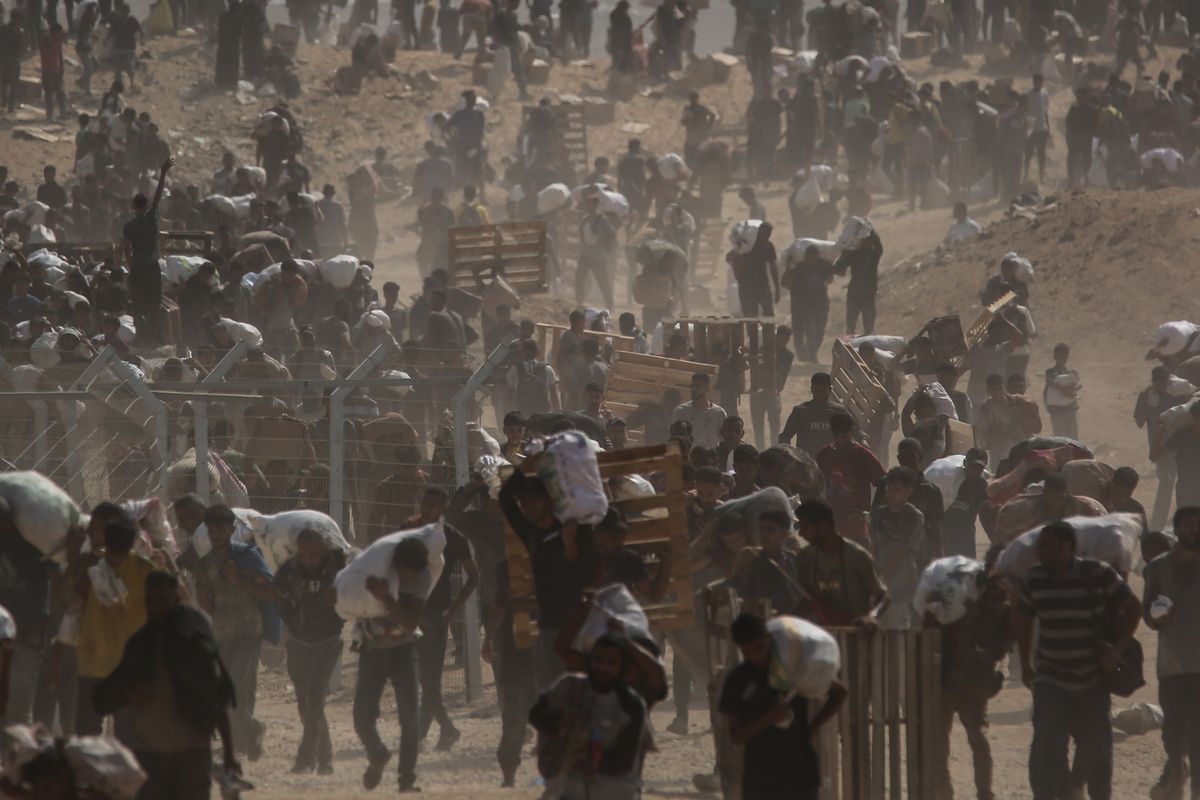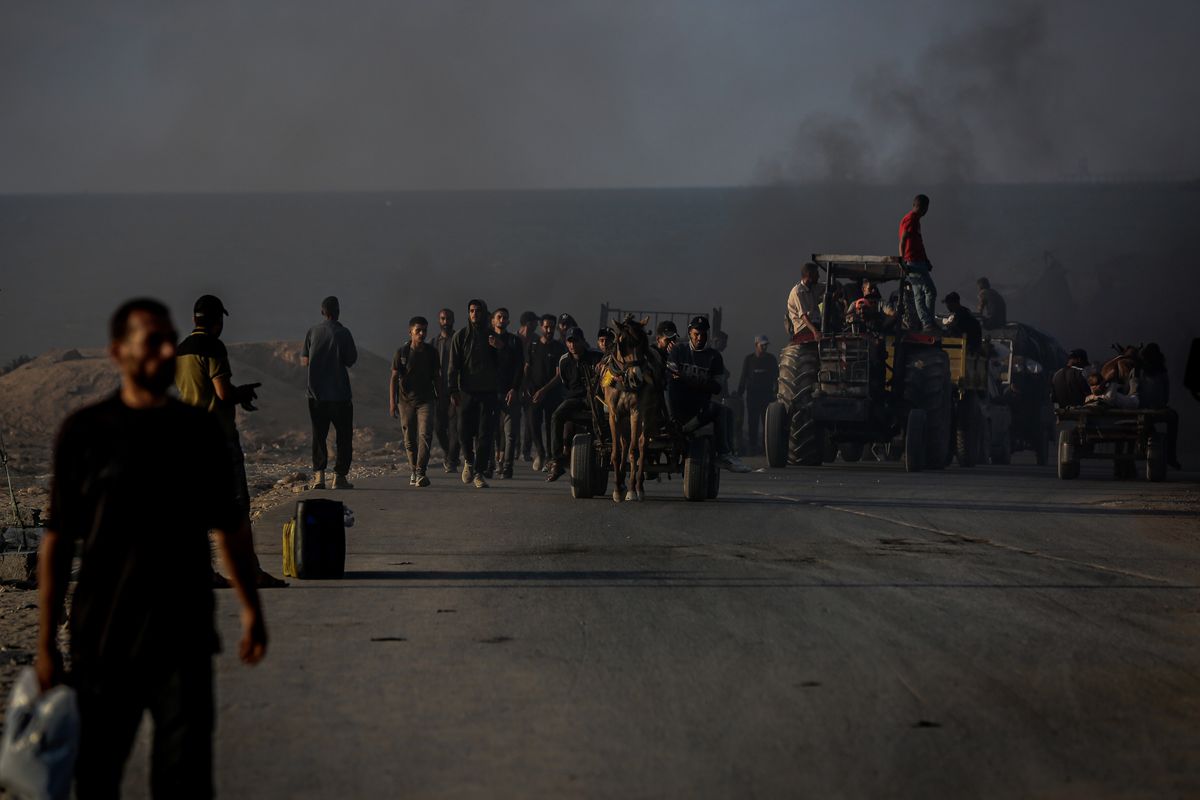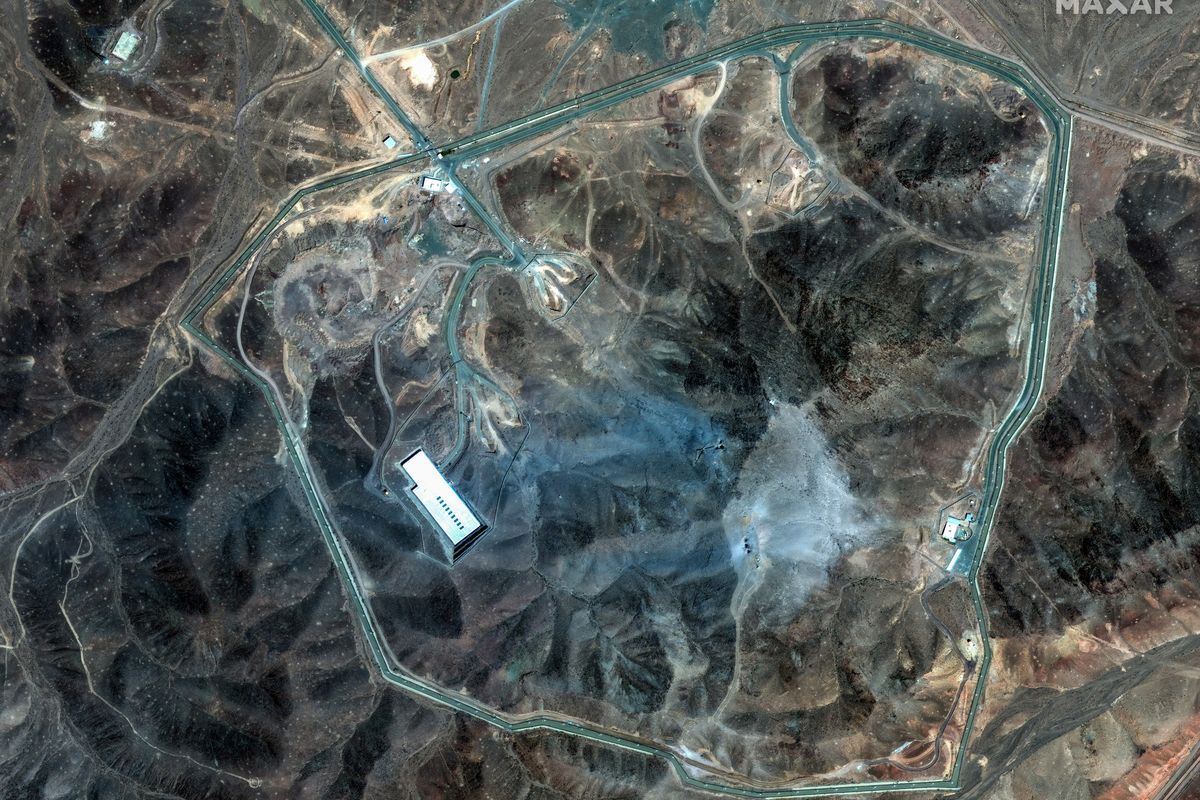SUBSCRIBER+EXCLUSIVE REPORTING – Despite warnings from multiple countries, the Iranian-backed, Yemen-based Houthi militia are continuing attacks on vessels in the Red Sea, adding a new complexity to tensions in the region and adding significant cost to the commercial shipping industry.
“The actions that we’ve seen from these Houthi forces are destabilizing,” Pentagon spokesman Brig. Gen. Pat Ryder told reporters recently. “This is an international problem that requires international solutions.”
The United States and twelve allied governments issued a stern warning to the Houthi militants last week, to stop their attacks in the Red Sea or be subject to a possible targeted military response. But just a day after the warning was issued, the U.S. Navy confirmed that an armed unmanned surface vessel detonated within a “couple of miles” of Navy vessels that were operating in there.
The rebel group has attacked ships in the Red Sea more than two dozen times since November 18, targeting vessels from 55 different countries – many of them commercial ships. The Houthis have used tactics including armed, unmanned surface vehicles and land-based cruise missiles launched from the Houthi-controlled Yemeni capital of Sanaa.
On Monday, Dec 11, a Houthi missile struck the Norwegian merchant ship Motor Transport STRINDA in the southern Red Sea area termed Bab al-Mandeb. U.S. Central Command (CENTCOM) conveyed that the assault caused a fire on-board, although no casualties among the 30-person crew – all Indian nationals – were reported. While no U.S. Navy ships were nearby, the USS Mason was deployed to assist.
The Houthis have said that the attacks are in protest over Israel’s war in Gaza, though the group is routinely attacking commercial vessels that are not related to Israel or the war.
“Iran-backed Houthi rebels, operating out of Yemen, want to block Israeli-linked vessels from passing through the Red Sea until Israel’s military operation in Gaza ends,” Daniel Gianfalla, an arbitrator, senior advisor and independent consultant in the maritime and energy sectors and former appointee to Homeland Security’s National Maritime Security Advisory Committee, told The Cipher Brief. “We (United States) see these attacks as directly threatening international commerce and maritime security in the region as highlighted by the recent attack on a Norwegian flagged tanker with no clear ties to Israel.”
Former Senior CIA Officer Bernard Hudson argues in an opinion piece in The Cipher Brief that pinprick attacks on Houthi positions won’t solve the bigger problem
France’s Ministry of Defense also said this month, that a French frigate intercepted a Yemen-originated drone headed toward a Norwegian cargo ship traveling from Malaysia to Italy, likely forestalling a kidnapping.
In mid-November, Houthi operatives seized the Galaxy Leader, a Japanese-operated, British-owned vessel sailing the Red Sea. The craft and its crew – primarily Filipino, Bulgarian, Romanian, Ukrainian and Mexican crew members – remain in Houthi custody in Yemen’s port of Hodeidah.
“These attacks represent a direct threat to international commerce and maritime security,” CENTCOM stated earlier this month. “They have jeopardized the lives of international crews representing multiple countries around the world.”
CENTCOM has stated that it has “every reason to believe that these attacks, while launched by the Houthis in Yemen, are fully enabled by Iran,” National Security Advisor Jake Sullivan told reporters that Tehran has it’s “finger on the trigger.”
The Houthis, a militant group that emerged in the late 1980s, (also known as Ansarallah) have controlled large swaths of Yemen, including the capital Sanaa since 2014. For almost a decade, the insurgent outfit has waged war against the Yemeni government, bolstered by a Riyadh-led military coalition.
For years, Tehran has provided an increasingly advanced arsenal of weapons and training to the Shia-aligned fighters, which analysts believe is likely being repurposed for use from its long-running war to the war in support of Hamas.
Traditionally, the degree to which Iran backs the Houthis has been intensely debated.
Tehran often denies such support, yet a Houthi spokesperson told The Cipher Brief that the financial and material underpinning is there – but that it is only a fraction of what Western governments and media proclaim. Nevertheless, the movement has declared itself a part of the “axis of resistance” of Iran-connected forces confronting Israel, the U.S. and their allies.
And experts fear that the attacks may be just the tip of the iceberg.
Houthi military spokesperson Yahya Saree has posted numerous videos online in recent weeks, boasting that the outfit has averted several ships from moving through Yemeni seas and vowing to continue such actions “until the Israeli aggression against our steadfast brothers in the Gaza Strip stops.”
“The Houthis have been at war for most of the last decade, but with fighting having ceased in Yemen, this situation has allowed them to turn their aggression toward the Red Sea and to try to make statements of support to Gaza by attacking ships that have an Israeli touchpoint,” said Ian Ralby, a Maritime and International Affairs Expert and Senior Fellow at the Center for Maritime Strategy. “It may be that that Israeli touchpoint is tenuous, and they may end up focusing on any ship that is tied to any country that is supporting Israel. But it is important to understand that the Houthis do not employ rational thinking the way we do, so judging their decision-making by how we would approach things will lead to confusing results. The statements they are making in support of Gaza might not make sense to us, so the situation is volatile.”
Analysts also highlight that going after commercial carriers gives the Houthis power to confer with an array of affected nations and, in doing so, bolster their profile on the world stage.
Indeed, the passageway via Yemen is strategically critical.
“The Red Sea is a major maritime route. Roughly 30% of global container traffic and 10% of global oil cargoes transit the Red Sea annually, constituting a significant portion of the 90% of world trade that happens by Sea,” Ralby stressed. “Additionally, disruptions to the Red Sea can cause huge strain on the global economy, given the amount of traffic that would have to be rerouted around Africa. Furthermore, it is the access point for key states in the energy sector and key states of geopolitical significance, including Egypt, Saudi Arabia, and Israel.”
Yemen sits at the junction of the Gulf of Aden and the Red Sea, leading to the ever-vital Suez Canal. The recent unrest has spurred war risk insurance premiums and security for Red Sea sailing ships to spike, meaning tens of thousands of dollars in added costs, which could ultimately increase consumer costs.
Subscriber+Members have a higher level of access to Cipher Brief Expert Perspectives and get exclusive access to The Dead Drop, the best national security gossip publication, if we do say so ourselves. Find out what you’re missing. Upgrade your access to Subscriber+ now.
Geoffrey Gresh, a Professor of International Security Studies at the National Defense University and author of Gulf Security and the U.S. Military: Regime Survival and the Politics of Basing, said the impact of such skirmishes is potentially significant for the many nations that rely on the free and safe transit of ships across the narrow shipping lanes.
“Approximately 23,000 ships traverse the Red Sea yearly, and many of these ships carry oil and gas to regional and global markets,” he noted. “Any shutdown of the Bab al-Mandeb or slowdown of ships traversing the region could have serious implications for the global political economy and energy markets.”
So, what is Washington doing to mitigate the growing threat?
“The United States is now pushing to stand up a multinational force to address the growing threats to shipping in the Red Sea akin to the Combined Task Forces 150 and 151 that were established previously to address the ‘War on Terror’ and support anti-piracy missions,” Gresh explained. “In the past several days, France has dispatched one of its naval vessels to support the U.S. Navy’s efforts to secure ships transiting the Red Sea. The U.S. is hoping to expand its operations into a more robust multinational mission if Houthi missile attacks continue to expand and threaten regional shipping.”
According to Bradley Bowman, Senior Director of the Foundation for the Defense of Democracies’ Center on Military and Political Power, the Biden administration should use the existing Combined Task Force 153 to “urgently build a larger international effort to protect commercial vessels sailing near Yemen and to interdict Iranian weapons smuggling to the Houthis.”
“That could help deter and defeat attacks as well as defend freedom of navigation and the unimpeded flow of commerce through one of the world’s most important maritime chokepoints,” he said.
Washington has said that it is considering all “appropriate responses.” As it stands, security in the maritime terrain is the duty of the Combined Maritime Forces (CMF), consisting of 39 participating nations and commanded by Commander Naval Forces Central Command/U.S. Fifth Fleet. However, U.S. officials have asserted that a sixth naval task force under CMF focused on strengthening security in the Red Sea is critical.
It's not just for the President anymore. Are you getting your daily national security briefing? Subscriber+Members have exclusive access to the Open Source Collection Daily Brief, keeping you up to date on global events impacting national security. It pays to be a Subscriber+Member.
The Trump administration designated the Houthis a foreign terrorist organization before departing office in January 2021. However, the Biden administration revoked the designation, with Secretary of State Antony Blinken saying the retraction was predetermined to “ensure that relevant U.S. policies do not impede assistance.” The U.S. has since been urged to reimpose terrorist status.
And while the war seems to be contained to the Middle East for now, some experts worry that the Red Sea could open a new frontier at any time if attacks continue to escalate.
“There is always a risk of a broadening conflict, but when more than 20,000 ships traverse the Red Sea in a given year, it means that there are a lot of countries that have interests tied to these shipping routes, and it could have significant second and third order effects on all regional and extra-regional countries alike,” Gresh surmised.
Ralby also cautioned that the Houthi’s “main power comes in their erratic nature and unpredictability.”
“They have long been a proxy for Iran, so they are armed with Iranian technology and weapons. Pirates in Somalia, the Gulf of Guinea and Southeast Asia have been able to dramatically impact regional security and global commerce without nearly the amount of weaponry or combat experience as the Houthis so that they could pose a significant threat,” he added. “At the same time, they are communicating to the international community that global maritime commerce will suffer so long as Gaza continues to suffer. The danger is that they enjoy the global attention, which they never got when fighting fellow Yemenis, get carried away, and continue to attack indiscriminately, regardless of what is happening in Gaza.”
Read more expert-driven national security insights, perspective and analysis in The Cipher Brief because National Security is Everyone’s Business
The Cipher Brief participates in Amazon's affiliate program and may earn a small commission from purchases made via links












